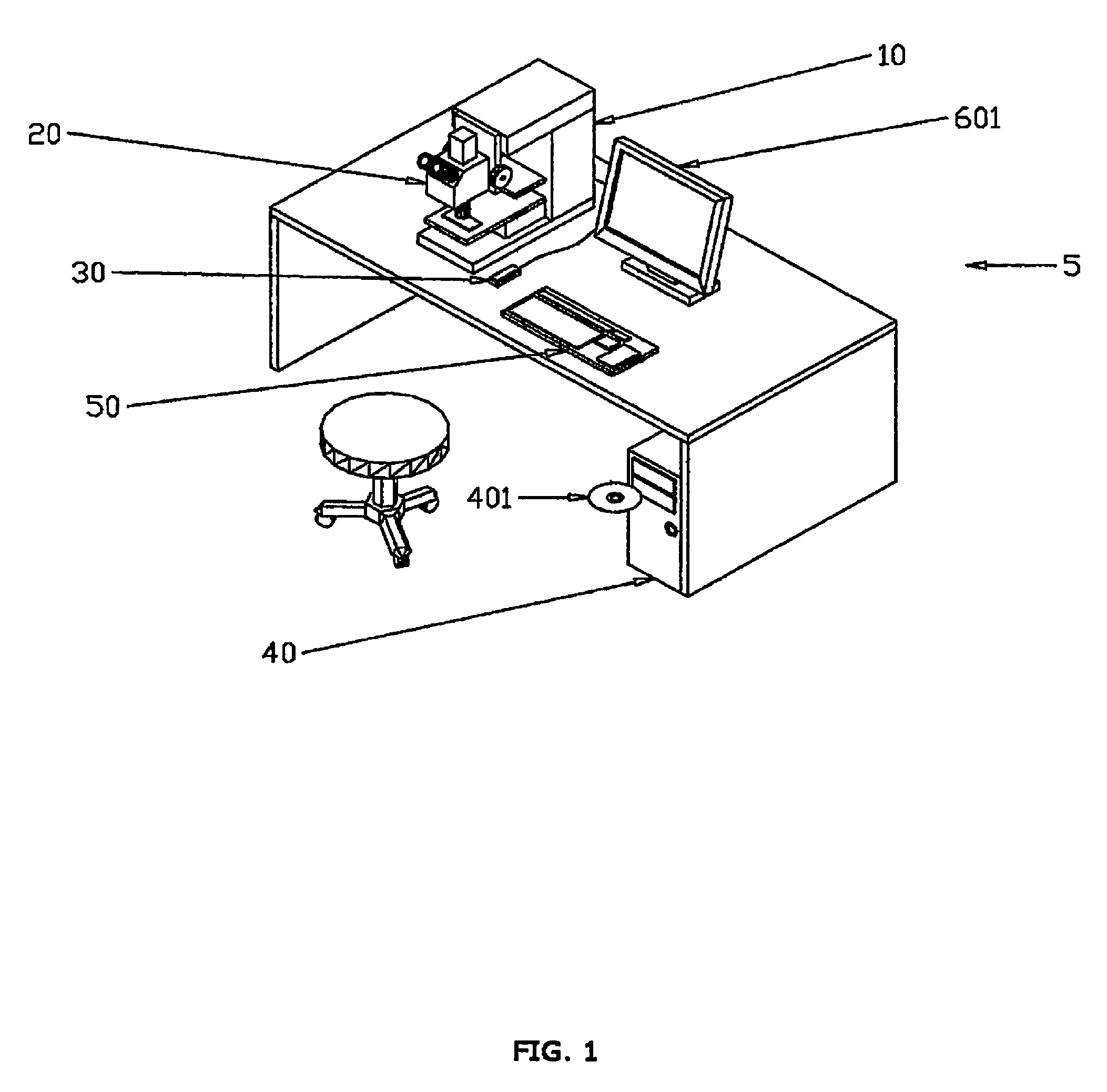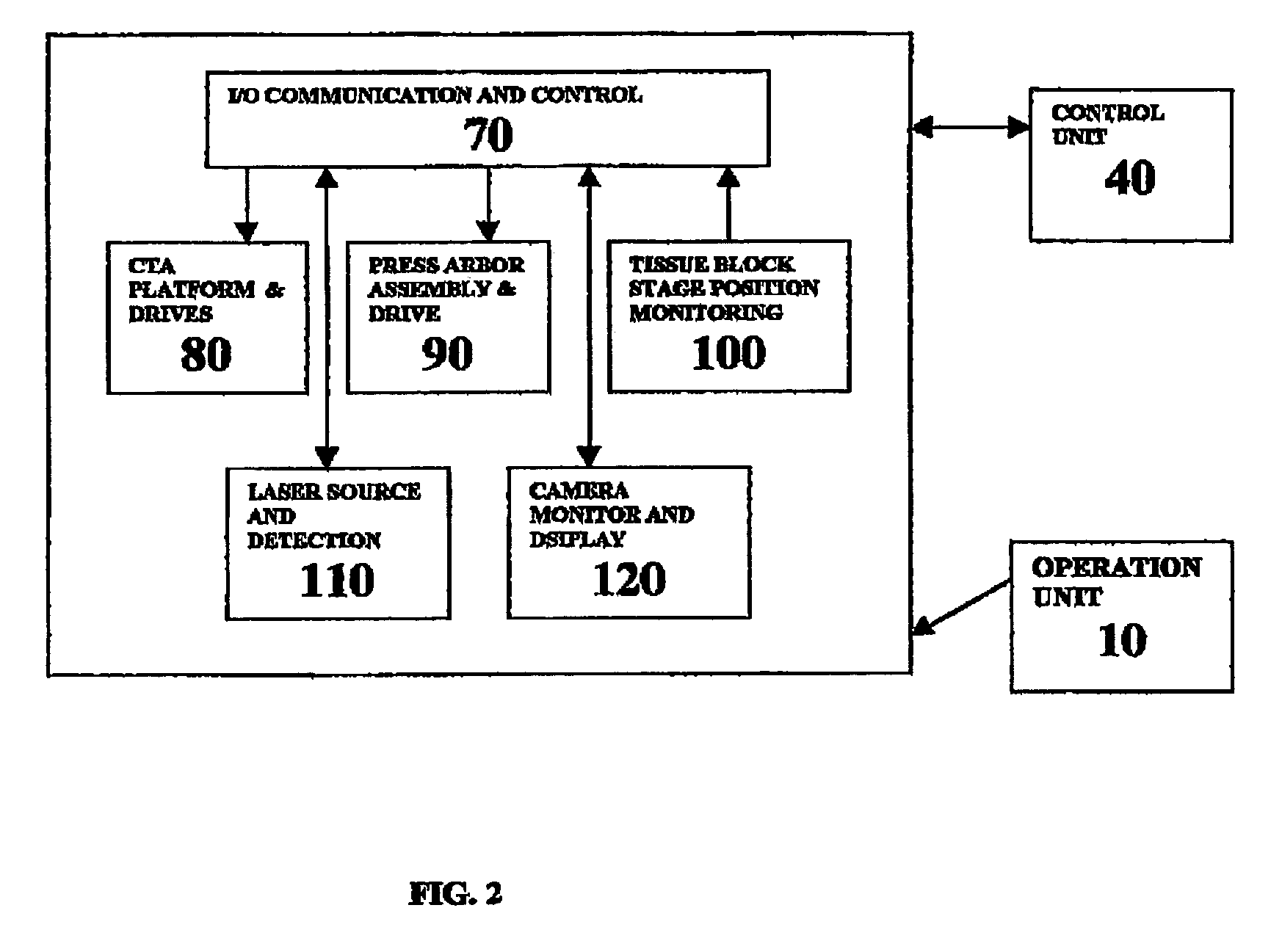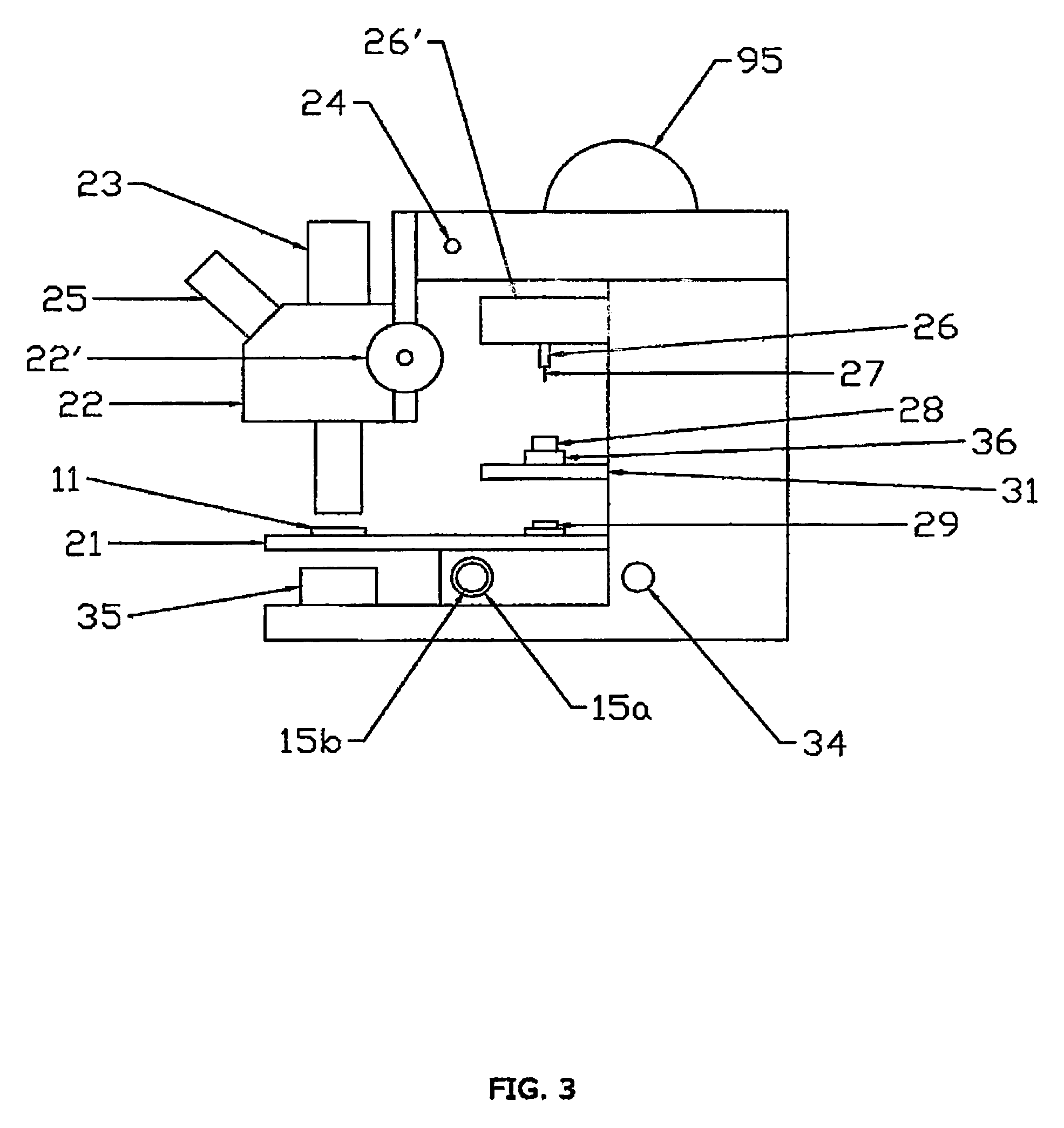Tissue punch and tissue sample labeling methods and devices for microarray preparation, archiving and documentation
a tissue punch and tissue sample technology, applied in the field of tissue punch and tissue sample labeling methods and devices for microarray preparation, archiving and documentation, can solve the problems of inability of current available methods to accurately prepare tissue slides, time-consuming, laborious, etc., and achieves the effects of avoiding errors, avoiding waste of tissue or time, and being prepared efficiently
- Summary
- Abstract
- Description
- Claims
- Application Information
AI Technical Summary
Benefits of technology
Problems solved by technology
Method used
Image
Examples
Embodiment Construction
[0052]The present invention generally provides improved devices, systems, and methods for handling of tissues for biological analysis. Exemplary embodiments of the invention provide improved devices, systems, and methods for preparing microarray blocks and slides from tissue samples taken from one or more tissue specimens. Punch tubes will often be used to separate the tissue samples from the tissue specimens, and each punch tube will often include a label indicating a punch tube identifier that can be used to identify a tissue sample contained within a receptacle of the punch tube. The labels may comprise bar codes, radiofrequency identification (“RFID”) devices, or the like, and similar labels may be placed on the tissue specimen block, a microarray block formed from the samples, the microarray slides taken from a microarray block, and the like. The punch tubes may be releasably mounted to a platform that allows the punch tubes to slide for collection of the samples, and the platf...
PUM
| Property | Measurement | Unit |
|---|---|---|
| thick | aaaaa | aaaaa |
| depth | aaaaa | aaaaa |
| size | aaaaa | aaaaa |
Abstract
Description
Claims
Application Information
 Login to View More
Login to View More - R&D
- Intellectual Property
- Life Sciences
- Materials
- Tech Scout
- Unparalleled Data Quality
- Higher Quality Content
- 60% Fewer Hallucinations
Browse by: Latest US Patents, China's latest patents, Technical Efficacy Thesaurus, Application Domain, Technology Topic, Popular Technical Reports.
© 2025 PatSnap. All rights reserved.Legal|Privacy policy|Modern Slavery Act Transparency Statement|Sitemap|About US| Contact US: help@patsnap.com



